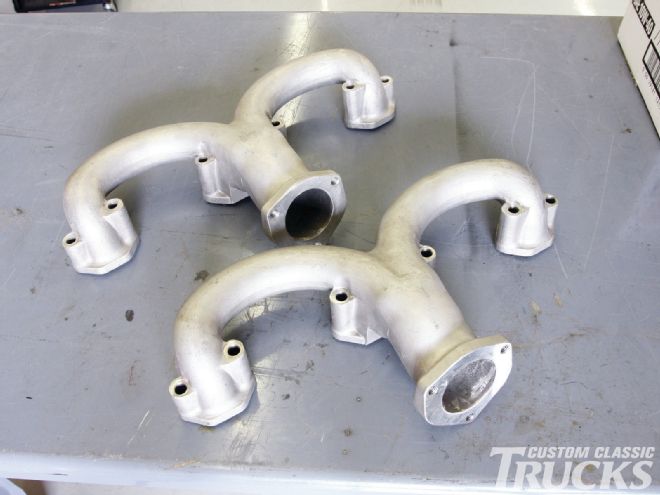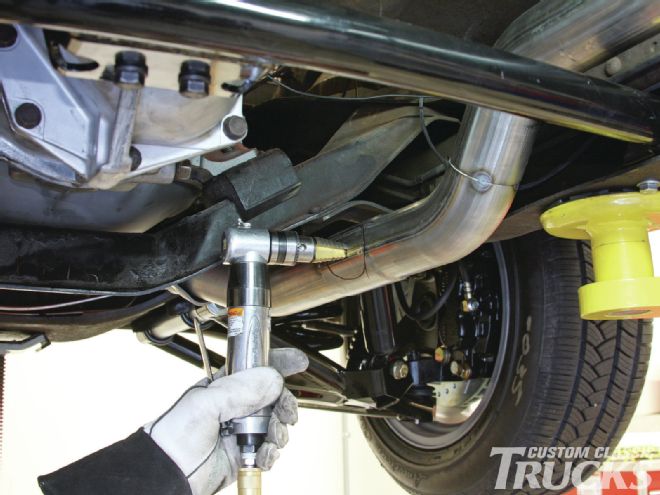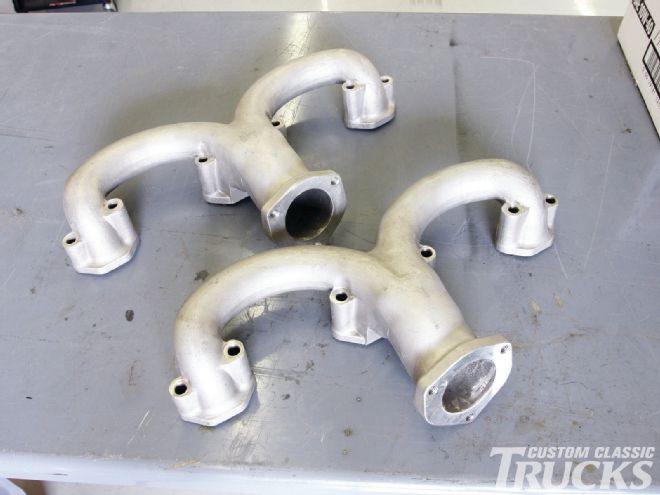
Exhaust work is something that most guys outsource to a local shop due to the fact that most of us either don’t have a lift, don’t weld, don’t want to do it, or a combination thereof. But with universal kits being ready made, not to mention the model specific kits available for many trucks these days, it’s never been easier for the DIYer to put together a great sounding exhaust system. With the SIM tech center at my disposable, I’ve started to tackle some of the tasks that I used to save for the professionals; one of them being exhaust work. I’ve had good results using Flowmaster’s U-Fit kits in the past and when I heard that they were offering them in stainless steel, I figured now was the time to step things up and build a custom exhaust for the C10.

I really like the idea of using stainless steel to build an exhaust, as it will outlast aluminized tubing, and in ten years it will look just like the day it went together (minus a bit of road rash). It also gives me the option of TIG welding the entire system together, which means a couple of things. One, I won’t have to endure the rain of MIG berries that is usually the result of an exhaust job. Two, I won’t have to endure the ugly gob of weld produced by a MIG welder. Three, the weld won’t be susceptible to rust as it will be welded with ER308L stainless steel rod as opposed to a standard MIG welded seam. And four, I can tack the system together under the truck and finish welding it on a work table where I can sit and weld comfortably. Those are four big positives for me!
But what’s a custom exhaust system if it doesn’t breathe and sound good?! For that, we’ll be using 2½-inch tubing throughout and a pair of Hushpower H-2 mufflers. I’ve run these mufflers before and they have a great low tone without that harsh rasp often associated with muscle car-type mufflers. They also don’t seem to create as much drone as a Turbo-style muffler, which is what usually gives you a migraine after four hours at highway speeds, and their diminutive size allows them to be located far aft of the cab where the noise can be contained away from the passenger compartment. To send the spent exhaust gasses rearward, a pair of stainless steel Tru-Ram ram’s horn-style manifolds from Speedway Motors will be used.

I started the exhaust build by laying out the Flowmaster kit and components on the ground to get a rough idea of what I had to work with. Then starting at the header flanges, I began to work my way rearward to the mufflers. I opted to use two pairs of ball flanges in the system so it will be manageable if and when the time comes to disassemble or modify the exhaust system. As I have plans to replace the stock 307 with an LS motor somewhere down the road as well as the possibility of the long bed chassis getting shortened, I wanted to make modifying the exhaust easy without having to redo a large portion of it in the future.
I spent the first day mocking everything up, cutting tubing, and tack welding the pieces together, and by the end of the second day, I had the entire system welded up and installed. Not a bad weekend project, but without a lift it would be a bit of a bear, admittedly. But the fact that I was able to build the system how I wanted it, to my specs, and to my standards is enough for me to probably never take another truck to an exhaust shop, but instead to do it on my own. This was my third system and I gotta say, I’m getting pretty good at it. So, if the magazine business dies and I’m forced to go get a real job, perhaps I could go into the exhaust business … CCT
 I really like Speedway Motors’ Tru-Ram exhaust manifolds as their tight fit makes clearance issues a thing of the past and the fact that they flow the same as a short-tube header makes them a good alternative to headers without that tinny sound associated with most headers. When they announced that they were going to be made available in stainless steel, I knew what I was going to run on the C10. I opted to leave them in their native, as-cast finish to make upkeep simple though they could be easily painted in high-temp paint or Speedway even offers them polished.
I really like Speedway Motors’ Tru-Ram exhaust manifolds as their tight fit makes clearance issues a thing of the past and the fact that they flow the same as a short-tube header makes them a good alternative to headers without that tinny sound associated with most headers. When they announced that they were going to be made available in stainless steel, I knew what I was going to run on the C10. I opted to leave them in their native, as-cast finish to make upkeep simple though they could be easily painted in high-temp paint or Speedway even offers them polished.